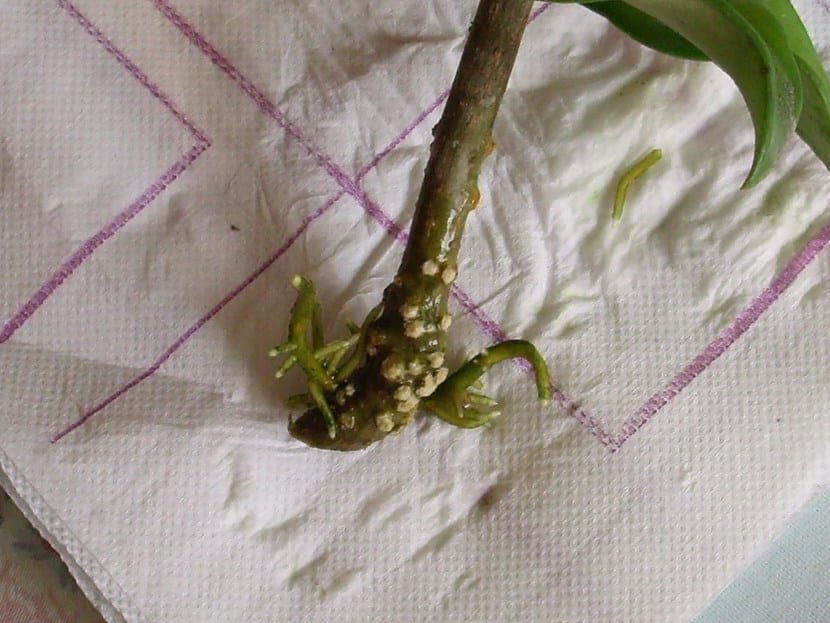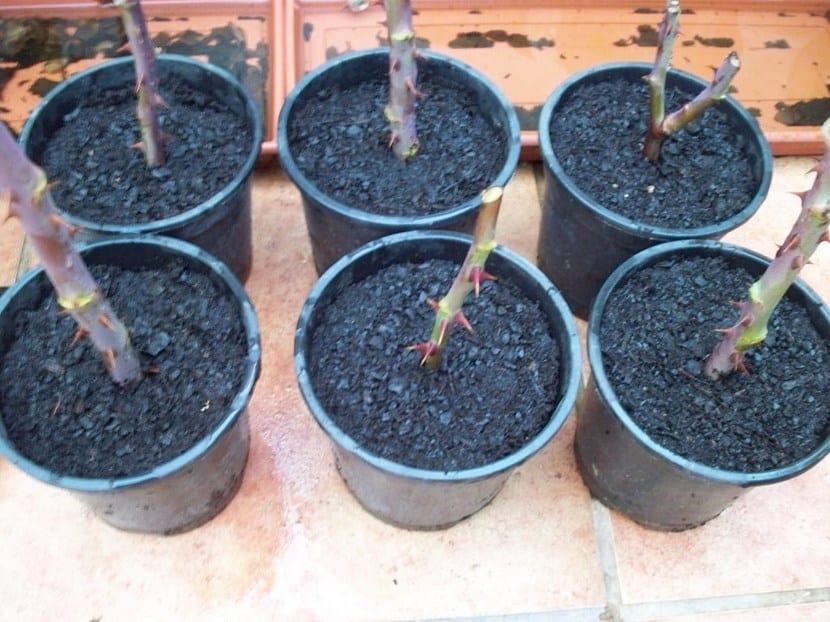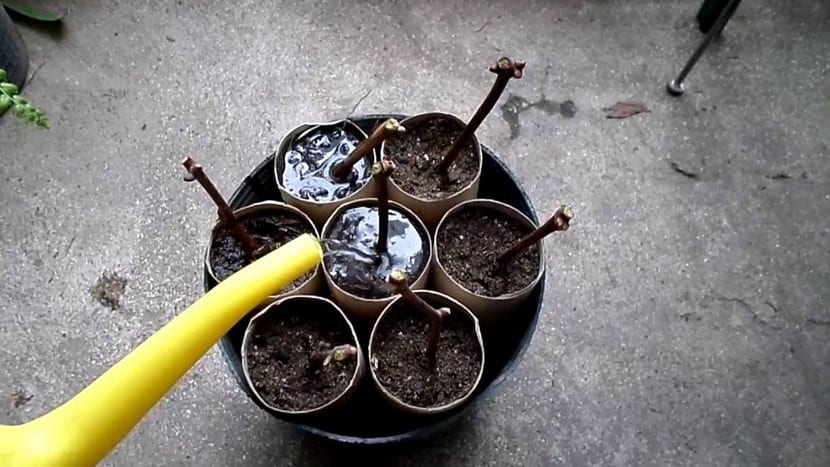
Eager to renovate the garden and plant new specimens? If you have several cuttings and want to reproduce them, pay attention to this post because today we are dealing with one of the many methods of propagation by cuttings.
In this case, it is the reproduction of woody cuttings, that is to say, those cuttings that are of a hard wood and with rigid stems. Unlike other types of cuttings, these need some special care that you may want to know.
Woody cuttings

In addition to their rigidity, the main characteristic of the woody cuttings is that after being cut at the end of autumn or when winter begins thiss form a callus at the end which helps root production. On the other hand, they are resistant cuttings, which is a good quality as they will better withstand diseases, cold and dry conditions.
You can find three types of woody cuttings:
Straight cutting or horizontal cutting: It is the most popular cutting and is used on deciduous trees and shrubs. They are achieved by making a horizontal basal cut and an apical cut to the bias or bevel.
Cutting in mallet or cane: they are cuttings that are cut together with a small portion of the branch of between 1-2,5cm of branch. This type of cuttings are used for certain conifers such as junipers or junipers.
Heel cutting: They are used in some conifers and they are cuttings that are obtained by cutting the bark at the base of the cutting.
Planting the cuttings

Once the woody cuttings are obtained, let's see how the planting process is.
The first thing to do is gather the cuttings that are 1 or 2 cm thick in diameter and make a horizontal cut just 1 cm below a node. Then it is time to remove the apical softwood, always cutting on the bias or bevel above a node.
The last step of preparation of cuttings It is to treat the bases of the stems with rooting hormone as this will help the cutting to "take hold".
Before locating the woody cuttings, prepare a germination zone made up of a coarse sand substrate or use coarse sand and perlite. Then you have to make small holes and introduce the cuttings to finally cover them well with the substrate, leaving the area compact and without weaknesses.
One of the keys to success is irrigation because woody cuttings need constant moisture. That is why irrigation is very important. In addition, they must be protected from the sun.
After a month from the beginning of the process you will see that the strongest cuttings begin to develop new plants. Then remove the weaker cuttings and transplant the new plants to their final place in the fall or spring.